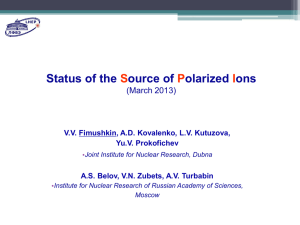PPT - Институт физики высоких энергий
реклама
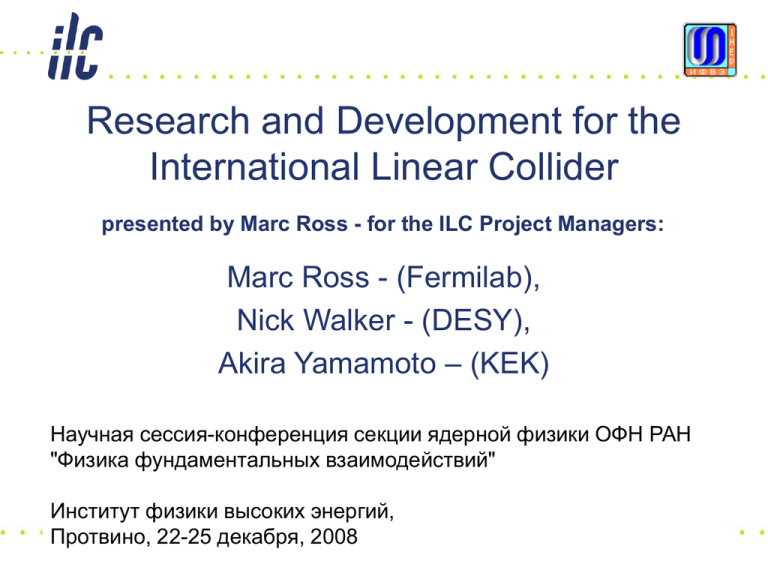
Research and Development for the International Linear Collider presented by Marc Ross - for the ILC Project Managers: Marc Ross - (Fermilab), Nick Walker - (DESY), Akira Yamamoto – (KEK) Научная сессия-конференция секции ядерной физики ОФН РАН "Физика фундаментальных взаимодействий" Институт физики высоких энергий, Протвино, 22-25 декабря, 2008 1 ILC – Background: • traced back to: – 1965 article by Maury Tigner in Nuovo Cimento … – 1972 meeting in Switzerland in which G. I. Budker… • e+/e- collider labs – – where the linear collider was born: – BINP, SLAC, KEK, Cornell, DESY, … • where cold SRF linac technology started • Technology Reviewed (TRC); • Recommendation made (ITRP): – 1995, 2002 and 2004 – 0.5-1 TeV ILC: Superconducting Linacs Presentation for Российской академии наук made at Институт физики высоких энергий, Протвино, 22 декабря, 2008 Marc Ross, Fermilab Pief Panofsky and Gersh Budker 2 Look back: 2004 • International Technology Recommendation Panel (ITRP) Report: – (released during LINAC 2004 Conference, Lubeck) The superconducting technology has features, some of which follow from the low rf frequency, that the Panel considered attractive and that will facilitate the future design: The large cavity aperture and long bunch interval simplify operations, reduce the sensitivity to ground motion, permit inter-bunch feedback, and may enable increased beam current. The main linac and rf systems, the single largest technical cost elements, are of comparatively lower risk. The construction of the superconducting XFEL free electron laser will provide prototypes and test many aspects of the linac. The industrialization of most major components of the linac is underway. The use of superconducting cavities significantly reduces power consumption. Basis of the ITRP decision; basis of our progress since then rests in large part on EU – XFEL project International Linear Collider R & D OUTLINE: • Reference Design – a global effort • Critical R & D for Accelerator systems (non SRF) • Critical R & D for Main Linac Technology • Project Preparation • Conclusion Presentation for Российской академии наук made at Институт физики высоких энергий, Протвино, 22 декабря, 2008 Marc Ross, Fermilab 4 ILC – Reference Design: • ~3000 bunches; ~ each 3 nC e+ / e-; ~20 MW avg. Beam Delivery and Interaction Region • six subsystems Presentation for Российской академии наук made at Институт физики высоких энергий, Протвино, 22 декабря, 2008 Marc Ross, Fermilab 5 ILC R & D – Global effort • ILC Reference Design (RD) – based on R & D in support of: TESLA, SBLC, JLC/NLC, VLEPP, CLIC – strongly linked to TESLA Design; with work done by Russian institutions: • BINP, Efremov, IHEP, INR, IRE-RAS, MEPhI, … • RD Report authored by 325 institutions (including physics/detectors) – 9 Russian institutions including: • BINP, Efremov, ITEP, JINR, Lebedev, and Universities • EU-XFEL a large scale demonstration – ~ 5 Russian institutions involved: • BINP, Efremov, IHEP, INR, JINR Presentation for Российской академии наук made at Институт физики высоких энергий, Протвино, 22 декабря, 2008 Marc Ross, Fermilab 6 SRF Test Facilities FNAL DESY NML facility Under construction first beam 2010 ILC RF unit test KEK, Japan TTF/FLASH ~1 GeV ILC-like beam ILC RF unit STF (phase I & II) Under construction first beam 2011 ILC RF unit test (* lower gradient) Presentation for Российской академии наук made at Институт физики высоких энергий, Протвино, 22 декабря, 2008 Marc Ross, Fermilab 7 (Non-SRF) Beam Test Facilities ATF & ATF2 (KEK) ultra-low emittance Final Focus optics Cornell KEK, Japan INFN Frascati CesrTA (Cornell) electron cloud low emittance DAfNE (INFN Frascati) kicker development electron cloud Presentation for Российской академии наук made at Институт физики высоких энергий, Протвино, 22 декабря, 2008 Marc Ross, Fermilab 8 GDE ILC Timeline and Mission 2005 2006 2007 2008 2009 2010 2011 2012 2013 GDE process Reference Design Report (RDR) Tech. Design Phase (TDP) 1 TDP 2 LHC physics Ready for Project Prepare a design and a plan that is completely ready to go - 2012. Submission The request from the HEP community is clear (Brian Foster). Since the timeline is uncertain: focus on R & D for cost and risk reduction develop ties within the accelerator community to facilitate a global project Presentation for Российской академии наук made at Институт физики высоких энергий, Протвино, 22 декабря, 2008 Marc Ross, Fermilab 9 Resources: Basis: institutional and regional support for science ILC will provide. Also: Support for science complements strong interest in emerging technologies ILC development effort utilizes: 1. ILC project preparation-specific funding • support for design and cost/risk reduction studies for the TDR 2. other project-specific funding (XFEL etc) 3. generic R&D • support for the development of specific technologies 4. combinations of the above • beam test facility support Presentation for Российской академии наук made at Институт физики высоких энергий, Протвино, 22 декабря, 2008 Marc Ross, Fermilab 10 ‘In-Kind’ R&D • provides return for regions/institutions investing resources for technical development • To ILC: – Beam Studies – Infrastructure usage – Engineering and Testing • To contributing Institute / Region: – Technology transfer between partner ILC institutions – Infrastructure development and qualification – Community connection mechanisms Presentation for Российской академии наук made at Институт физики высоких энергий, Протвино, 22 декабря, 2008 Marc Ross, Fermilab 11 The role of R&D: • in support of a mature, low risk design • take advantage the ongoing, increasing global investment in SRF and related technology – the big impact of the ITRP decision – Improve performance, reduce cost, challenge limitations, develop inter-regional ties, develop regional technical centers • Both a ‘project-based’ and a ‘generic’ focus The ILC has: • A Baseline Design; to be extended and used for comparison (RDR) – But ready for deployment • Research and Development activities on Alternates to the Baseline – Engages the community venue for cost-saving / risk-reduction actvities • Plug – compatibility / modularity policy flexibility between the above – The critical role of associated projects – XFEL, Project X, SNS, JLab12, ERLs, … • Models of ‘project implementation’ – The transition from R&D to a real project – The link between Technical Phase R&D and the project political process Presentation for Российской академии наук made at Институт физики высоких энергий, Протвино, 22 декабря, 2008 Marc Ross, Fermilab 12 International Linear Collider R & D • Reference Design – a global effort • Critical R & D for Accelerator systems (non SRF) • Critical R & D for Main Linac Technology • Project Preparation • Conclusion Presentation for Российской академии наук made at Институт физики высоких энергий, Протвино, 22 декабря, 2008 Marc Ross, Fermilab 13 ILC – Reference Design: Examples: Beam Delivery and Interaction Region • Positron Source, Damping Ring, Beam Delivery Presentation for Российской академии наук made at Институт физики высоких энергий, Протвино, 22 декабря, 2008 Marc Ross, Fermilab 14 Critical R & D – Accelerator Systems – Positron Source • Positron Source Design – – Each ILC pulse high energy electrons pass through a helical undulator that generates ~ 20 MeV gamma rays – These gamma rays are directed on a high power rotating titanium target – Generated positrons are collected through a very short focus, close proximity lens (OMD) and captured in a normalconducting RF accelerator – The positrons are injected into the positron damping ring to be used for collisions on the next machine pulse Presentation for Российской академии наук made at Институт физики высоких энергий, Протвино, 22 декабря, 2008 Marc Ross, Fermilab 15 RDR Positron Source Layout R & D Priorities – Undulator (UK – RAL, Cornell – Mikailichenko) Target (KEK, BINP – Logachev) Optical Matching Device (OMD)- replacement for ‘Flux Concentrator’ Liquid Lithium Lens (KEK, BINP – Logachev) Capture RF – normal conducting accelerator (Paramonov –INR, SLAC) Linear Collider – Positron Source <= Li Out Li In => Lithium Lens with feeding cables. (Courtesy of Yu. Shatunov, BINP) Lithium Lens CAD model section view. (Courtesy of Alexander Mikhailichenko, Cornell) Presentation for Российской Marc Ross, Fermilab 17 BINP – Positron System R & D • Liquid Lead target development for KEK-B – – – – (years of operational experience at BINP) Initial activity for SLAC - NLC Alternate to baseline rotating target (also tested at BINP) To be installed at KEK-B Linac 2009 • Boron Nitride window / brazing tests underway – Used in liquid target – Also applicable to Lithium Lens applications • Liquid Lithium Lens – ~ factor 2 improved capture compared to pulsed electromagnet – design study in 2009 – support from BINP and KEK – High pressure Li is main issue Presentation for Российской академии наук made at Институт физики высоких энергий, Протвино, 22 декабря, 2008 Marc Ross, Fermilab 18 Positron source: First Ever Full Length Undulator Cryomodule Ln2 precooling Constructed by Rutherford Appleton Lab. First cooldown of complete system early Sept 08. Vac vessel closed Vertical magnet tests successful – design field exceeded in both 1.75m undulators But, vacuum leak when cold – now being repaired – should be complete by Jan 09 Presentation for Российской академии наук made at Институт физики высоких энергий, Протвино, 22 декабря, 2008 KEK ATF Beam Test planning Marc Ross, Fermilab 19 Critical R & D – Accelerator Systems – Damping Ring • Damping Ring Design – Two 6 km circumference 5GeV damping rings (e+ / e-) – Each pulse inject ~ 3000 bunches and ‘damp’ to very low emittance in 200 ms – Bunch spacing 6 ns – Extract one – by – one with very fast pulse magnet kicker a bunch every 300 ns • Component testing with beam at test facilities: – Cornell (CESR TA) – Dafne (Frascati) – ATF (KEK) Presentation for Российской академии наук made at Институт физики высоких энергий, Протвино, 22 декабря, 2008 Marc Ross, Fermilab 20 Damping Rings Critical R&D • Electron cloud. – Goal is to demonstrate effective mitigation methods. – Studies are in progress at CesrTA, DANE, KEKB. • Fast injection/extraction kickers. – Goal is to demonstrate fast, high-power pulsers meeting ILC damping rings specifications. – Studies are in progress at ATF, DANE, SLAC. • Low-emittance tuning. – Goal is to demonstrate reliable operation with 2 pm vertical emittance. • Typical beam size ~ few microns – Swiss Light Source has recently achieved 3 pm. – Studies are in progress at ATF and CesrTA. Presentation for Российской академии наук made at Институт физики высоких энергий, Протвино, 22 декабря, 2008 Marc Ross, Fermilab 21 Electron Cloud Studies in CesrTA Installation of wigglers in former location of CLEO (above). Retarding field analyzers in wiggler vacuum chambers, and first data (right). Presentation for Российской академии наук made at Институт физики высоких энергий, Протвино, 22 декабря, 2008 Marc Ross, Fermilab 22 Fast Kicker R&D • The goal is to develop and demonstrate a highreliability fast kicker that meets the ILC specifications for damping ring injection and extraction. Pulse amplitude 10 kV Bunch spacing 3 ns Pulse repetition rate 6.6 MHz Pulse stability ~ 0.1% Proposed for smaller 3 km circumference damping rings • R&D program includes activities at SLAC, INFN/LNF and KEK. Drift Step Recovery Diodes – Anatoly Krasnykh, SLAC and – A. Kardo-Sysoev, Ioffe Institute of Physics (RAS) Damping Rings Summary, ILC08 Global Design Effort 23 Fast Injection/Extraction Kickers: SLAC • Researchers at SLAC are investigating two possible technologies: MOSFET array, and DSRD fast switch. • Both technologies provide attractive characteristics. • A hybrid pulser may be the best solution. 1 ns / division Damping Rings Summary, ILC08 Global Design Effort 24 Critical R & D – Accelerator Systems – Beam Delivery • Beam Delivery (BDS) Design – – BDS delivers the beam from the high power linac to the users detector – The BDS provides high power collimation and precision focusing of the beams – There will be two detectors arranged to they can be ‘exchanged’ using a ‘push-pull’ mechanism – Critical BDS components ‘live’ within the detector • BDS relies on precision instrumentation systems and optics correction algorithms – Collimation of high density, high power beams is a key technology – Beam testing is required: ATF2 at KEK Presentation for Российской академии наук made at Институт физики высоких энергий, Протвино, 22 декабря, 2008 Marc Ross, Fermilab 25 Beam Delivery System R & D • ATF2 – constructed, hardware mostly commissioned – Next: beam commissioning – Developing long-terms plans for AFT2 • SC FD • squeezed beta* tests, etc • IR integration (MDI) – have a new version of “IR Interface Document” – the document is focused on functional requirements – MDI and DDI (Detector-Detector Interface) – Also a lot of progress on detailed Detector and MDI design Andrei Seryi, SLAC, BDS Group Leader Presentation for Российской академии наук made at Институт физики высоких энергий, Протвино, 22 декабря, 2008 Marc Ross, Fermilab 26 Travelling focus Travelling focus idea proposed by Vladimir Balakin at the "Beam-Beam and Beam-Radiation Interactions, High Intensity and Nonlinear Effects", the 7th ICFA Workshop on Beam Dynamics, UCLA, USA, 13-16 May 1991, and also at the Linear Collider Workshop LC91, Protvino, 1991 Presentation for Российской академии наук made at Институт физики высоких энергий, Протвино, 22 декабря, 2008 Marc Ross, Fermilab 27 International Linear Collider R & D • Reference Design – a global effort • Critical R & D for Accelerator systems (non SRF) • Critical R & D for Main Linac Technology • Project Preparation • Conclusion Presentation for Российской академии наук made at Институт физики высоких энергий, Протвино, 22 декабря, 2008 Marc Ross, Fermilab 28 Critical R & D – Main Linac Technology • Main Linac Design – Each pulse a ~3 MHz bunch ‘train’ of e- and e+ is accelerated from 5 to 250 GeV using two 11 km linacs – Each linac has ~ 8000 9 cell superconducting standing wave RF cavities operating at 1.3 GHz – Gradient: 31.5 MV/m – RF Power for each linac is provided through rectangular waveguide from ~ 300 10 MW peak power ‘multi-beam’ klystrons • The main linac is a ‘cost driver’ – R & D is underway to: – Improve gradient performance – Produce and transport high power RF more efficiently – Test components and systems in each region Presentation for Российской академии наук – EU-XFEL (17 GeV) uses almost identical technology made at Институт физики высоких энергий, Протвино, 22 декабря, 2008 Marc Ross, Fermilab 29 Superconducting Cavity R&D Niobium Sheet metal cavity Fabrication: Forming and welding (EBW) Surface Process: Chemical etching and polishing Cleaning Inspection/Tests: Optical Inspection (warm) Thermometry (cold) 081209 ILC Global Design Effort 30 Combined Yield of Jlab and DESY Tests 48 Tests, 19 cavities 23 tests, 11 cavities ACCEL, AES, Zanon, Ichiro, Jlab One Vendor One Vendor Yield (A6, A7, A8, A11, A12, A15, AC115, AC117, AC122, 125, 126) 1.2 1.2 1 1 0.8 0.8 50% 0.6 Fraction Fraction All Vendor Yield (A6, A7, A8, A11, A12, A15, AES 1- 4, Ichiro5, J2,AC115, AC117, AC122, 125, 126, Z139, 143) 0.6 0.4 0.4 0.2 0.2 0 0 >15 >20 >25 >30 >35 >40 >15 >20 >25 >30 >35 >40 Gradient (MV/m) Gradient (MV/m) Yield 45 % at 35 MV/m being achieved by cavities with a qualified vendor !! Presentation for Российской академии наук made at Институт физики высоких энергий, Протвино, 22 декабря, 2008 Marc Ross, Fermilab 31 Klystron RF Power Source • S. Kazakov, A. Larionov, V. Teriaev, BINP, Branch of Institute of Nuclear Physics, Russia, et. al – Russian Design team; fabricated in Japan • Most successful 10 MW multibeam klystron BASELINE Presentation for Российской академии наук made at Институт физики высоких энергий, Протвино, 22 декабря, 2008 Marc Ross, Fermilab 32 Basis: 2 tunnels Cost Reduced RF Concepts Surface Klystron Cluster (Adolphsen, Nantista, SLAC; Kazakov, KEK) Both options aimed at single-tunnel solutions Also: Distributed RF Source Concept (Fukuda, KEK; Kazakov, KEK) Civil Engineering • 30% of the estimated cost • Three sample sites studied – Japan, CERN, Illinois – Quite similar configurations; deep rock dual tunnel • JINR suggested a 4th sample site near Dubna – Studied ~ 20 years ago • This site has several contrasting features that provide a comparison basis – Single tunnel with near surface building – Soft tunneling material – (Shirkov, Trubnikov, Delov – JINR / GSPI) • Siting process is political – but it is useful to have studied and reported sample sites • See presentation by G. Shirkov, JINR Presentation for Российской академии наук made at Институт физики высоких энергий, Протвино, 22 декабря, 2008 Marc Ross, Fermilab 34 Deep & Shallow Site Configurations 35 International Linear Collider R & D • Reference Design – a global effort • Critical R & D for Accelerator systems (non SRF) • Critical R & D for Main Linac Technology • Project Preparation – Collaboration with CERN – Making the transition from broad-based R & D to a practical Project • Conclusion Presentation for Российской академии наук made at Институт физики высоких энергий, Протвино, 22 декабря, 2008 Marc Ross, Fermilab 36 Collaboration with CLIC / CERN • Formulated (Barish/Aymar) 11.2007 – Established in 02.2008; initially 5 working groups • ‘Exclusive’ strategy: – pick and choose efforts with strong commonality; optimize use of resources – startup philosophy: choose tasks more likely to succeed • Promoting communication / links between the two groups – will facilitate discussion and consensus building between teams – improving the credibility of both • Common costing methodology / basis is a collaboration priority Presentation for Российской академии наук made at Институт физики высоких энергий, Протвино, 22 декабря, 2008 Marc Ross, Fermilab 37 ILC R & D Resources • (summarized in R & D Plan; published 2008.06) • 2007-2010 4 years Technical Area: Superconducting RF Tech CFS / Global (Controls) Effort (years * Funds (M$) people) 615 90 112 4 Accelerator Systems 415 27 Total 1142 121 Presentation for Российской академии наук made at Институт физики высоких энергий, Протвино, 22 декабря, 2008 Marc Ross, Fermilab 38 International Linear Collider R & D • Reference Design – a global effort • Critical R & D for Accelerator systems (non SRF) • Critical R & D for Main Linac Technology • Project Preparation • Conclusion Presentation for Российской академии наук made at Институт физики высоких энергий, Протвино, 22 декабря, 2008 Marc Ross, Fermilab 39 Conclusion • ILC Global Design Effort has 3 goals: – – – – Developing the community Doing R & D Designing the ILC and preparing a practical Project Until end 2012 • ILC GDE is launching the first *truly global large scale international science project* – Based roughly equally in each of three regions: Americas, Europe and Asia • Russian contributions to ILC were (and are) vital and span the entire complex • We invite and strongly encourage your continued and increased participation! Presentation for Российской академии наук made at Институт физики высоких энергий, Протвино, 22 декабря, 2008 Marc Ross, Fermilab 40
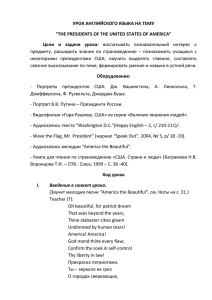
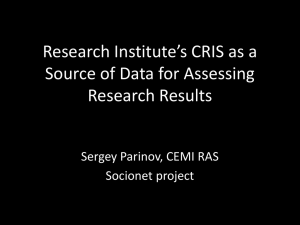

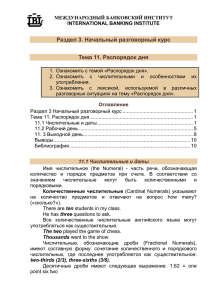
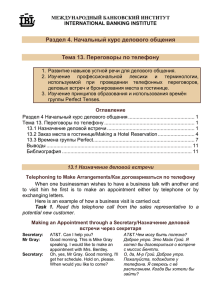
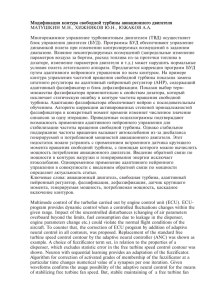
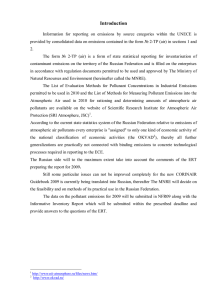
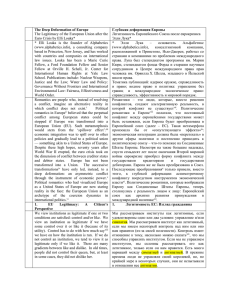
![John Escott - Dead Man's Island [EnglishOnlineClub.com]](http://s1.studylib.ru/store/data/006523066_1-786336f07e8f7d35b3e35b74c001cce1-300x300.png)
